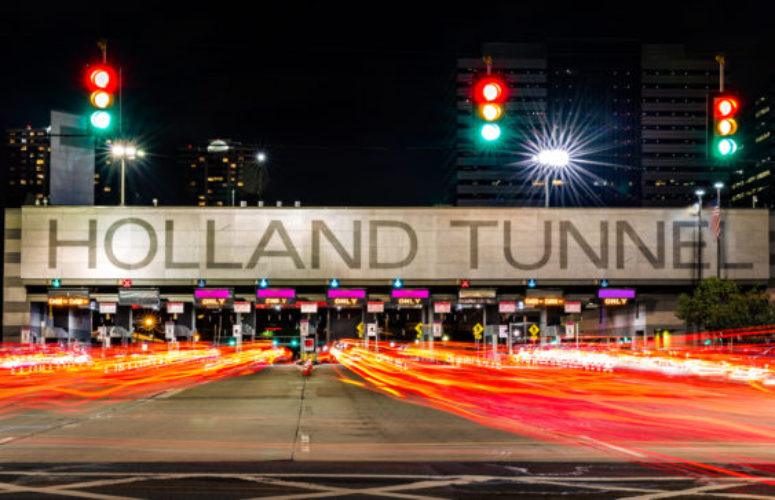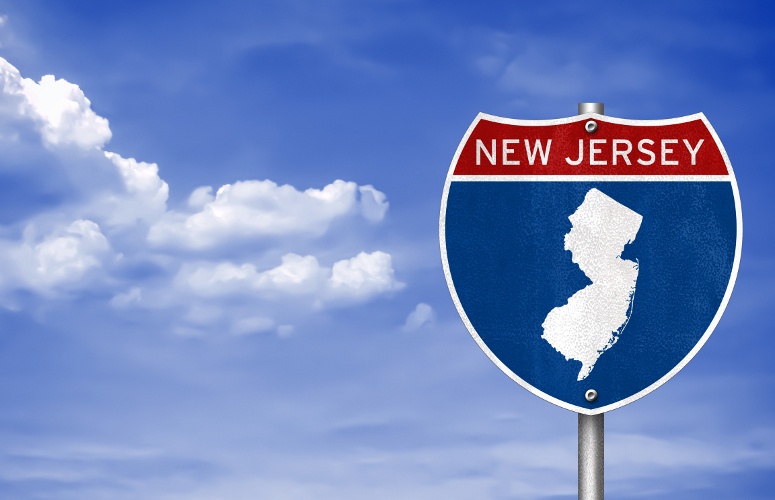
Holland Tunnel Takes a Giant (Digital) Leap Forward
On Dec 30, 2020All tolls at the Holland Tunnel are now being collected electronically under a modern toll system which debuted recently. That won’t come as a big surprise to the vast majority of Holland Tunnel drivers who already use E-ZPass and will see little difference in their commutes. But the changeover represents a giant leap forward at the Port Authority of New York and New Jersey’s Hudson River crossings.
Over the next 18 months, all three river crossings will switch to a new state-of-the-art electronic tolling system used by modern highway networks around the world. The new system, known as all-electronic tolling (AET), uses overhead gantries in place of toll lanes with E-ZPass transponders and toll booths that require attendants.
The Holland is the first Hudson crossing to activate the technology, to be followed by the Lincoln Tunnel and the George Washington Bridge. Once completed, all six Port Authority bridges and tunnels will be equipped with the modern tolling system. AET already is in use at the Outerbridge Crossing, Bayonne Bridge and Goethals Bridge, where it has helped reduce crashes since implementation in 2019. Vehicle crashes at the Hudson River toll plazas are expected to decline by 75 percent once AET is fully implemented.
For Holland Tunnel motorists without E-ZPass tags, the change will come in the mail and customer service. Since mid-March, when Port Authority removed attendants from toll booths due to public health and safety protocols related to COVID-19, toll information was collected electronically by cameras and drivers were sent their toll bills by mail.
Toll bills will still arrive by mail, but with greater accuracy and improved customer service for transaction resolution. Additionally, a newly launched Tolls NY smartphone app provides easy and 24/7 access to customer service for all cashless toll transactions, eliminating the need to wait for bills in order to pay or access to toll and payment history.
On the roadway, motorists can look forward to a faster, more efficient and seamless experience crossing the Hudson into New York. The toll plazas will be history, as toll booths will no longer be in use.
“A significant portion of vehicle accidents happen within the toll collection area because of the lane changing and merging into toll lanes,” said Enrique Ramirez, general manager of the Holland Tunnel. “By eliminating those features, drivers can enter the tunnel more seamlessly. All-electronic tolling is a safer, more efficient way to keep the region moving.”
Two massive gantries housing the technology for the new toll system, each 130 feet long and weighing about 41,000 pounds, were installed over the summer about 22 feet above the roadway just ahead of the eastbound Holland Tunnel entrance (click here to watch the gantry installation). For pedestrians in Jersey City, roadway improvements and upgraded intersections will improve street-level safety.
“Safety is always our top priority for the traveling public and our employees as we work to improve all aspects of customer service and make regional travel an easier, intuitive and modern experience,” said Rocco Cetera, a program director in the Port Authority’s Tunnels, Bridges and Terminals Department that oversees all PA crossings.
To access more business news, visit NJB News Now.
Related Articles:





